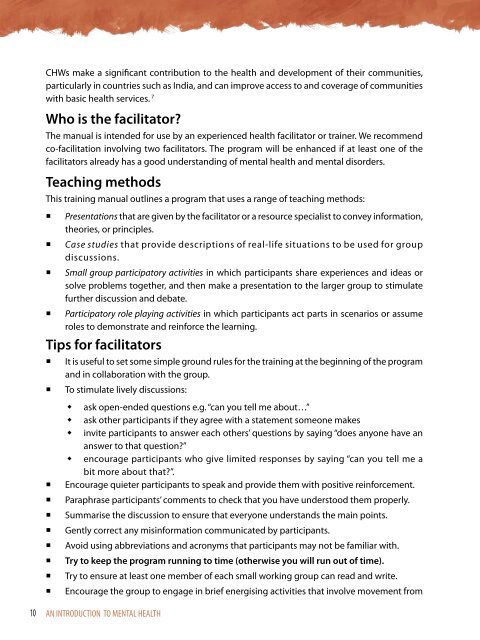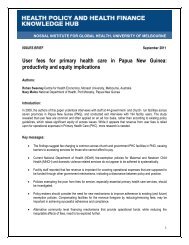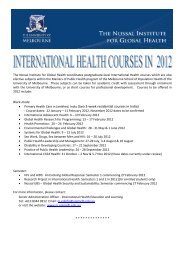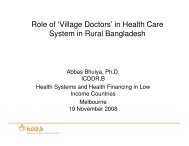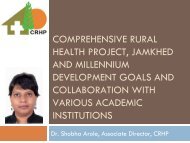AN INTRODUCTION TO MENTAL HEALTH - The Nossal Institute for ...
AN INTRODUCTION TO MENTAL HEALTH - The Nossal Institute for ...
AN INTRODUCTION TO MENTAL HEALTH - The Nossal Institute for ...
You also want an ePaper? Increase the reach of your titles
YUMPU automatically turns print PDFs into web optimized ePapers that Google loves.
CHWs make a significant contribution to the health and development of their communities,<br />
particularly in countries such as India, and can improve access to and coverage of communities<br />
with basic health services. 7<br />
Who is the facilitator?<br />
<strong>The</strong> manual is intended <strong>for</strong> use by an experienced health facilitator or trainer. We recommend<br />
co-facilitation involving two facilitators. <strong>The</strong> program will be enhanced if at least one of the<br />
facilitators already has a good understanding of mental health and mental disorders.<br />
Teaching methods<br />
This training manual outlines a program that uses a range of teaching methods:<br />
• Presentations that are given by the facilitator or a resource specialist to convey in<strong>for</strong>mation,<br />
theories, or principles.<br />
• Case studies that provide descriptions of real-life situations to be used <strong>for</strong> group<br />
discussions.<br />
• Small group participatory activities in which participants share experiences and ideas or<br />
solve problems together, and then make a presentation to the larger group to stimulate<br />
further discussion and debate.<br />
• Participatory role playing activities in which participants act parts in scenarios or assume<br />
roles to demonstrate and rein<strong>for</strong>ce the learning.<br />
Tips <strong>for</strong> facilitators<br />
•<br />
•<br />
•<br />
•<br />
•<br />
•<br />
•<br />
•<br />
•<br />
•<br />
It is useful to set some simple ground rules <strong>for</strong> the training at the beginning of the program<br />
and in collaboration with the group.<br />
To stimulate lively discussions:<br />
• ask open-ended questions e.g. “can you tell me about…”<br />
• ask other participants if they agree with a statement someone makes<br />
• invite participants to answer each others’ questions by saying “does anyone have an<br />
answer to that question?”<br />
• encourage participants who give limited responses by saying “can you tell me a<br />
bit more about that?”.<br />
Encourage quieter participants to speak and provide them with positive rein<strong>for</strong>cement.<br />
Paraphrase participants’ comments to check that you have understood them properly.<br />
Summarise the discussion to ensure that everyone understands the main points.<br />
Gently correct any misin<strong>for</strong>mation communicated by participants.<br />
Avoid using abbreviations and acronyms that participants may not be familiar with.<br />
Try to keep the program running to time (otherwise you will run out of time).<br />
Try to ensure at least one member of each small working group can read and write.<br />
Encourage the group to engage in brief energising activities that involve movement from<br />
10<br />
<strong>AN</strong> <strong>INTRODUCTION</strong> <strong>TO</strong> <strong>MENTAL</strong> <strong>HEALTH</strong>


